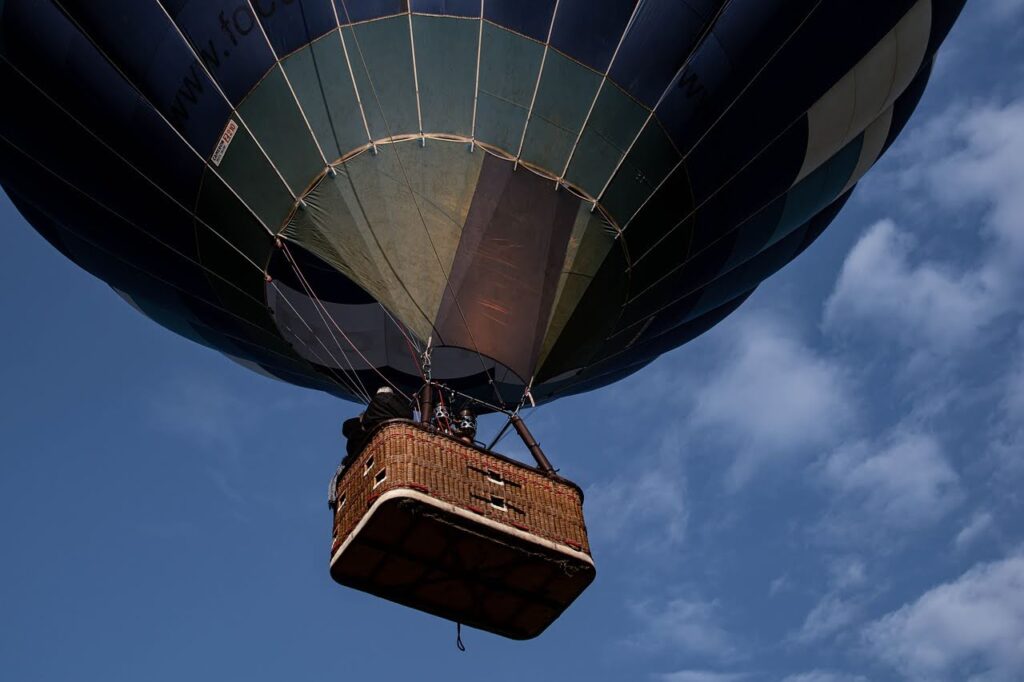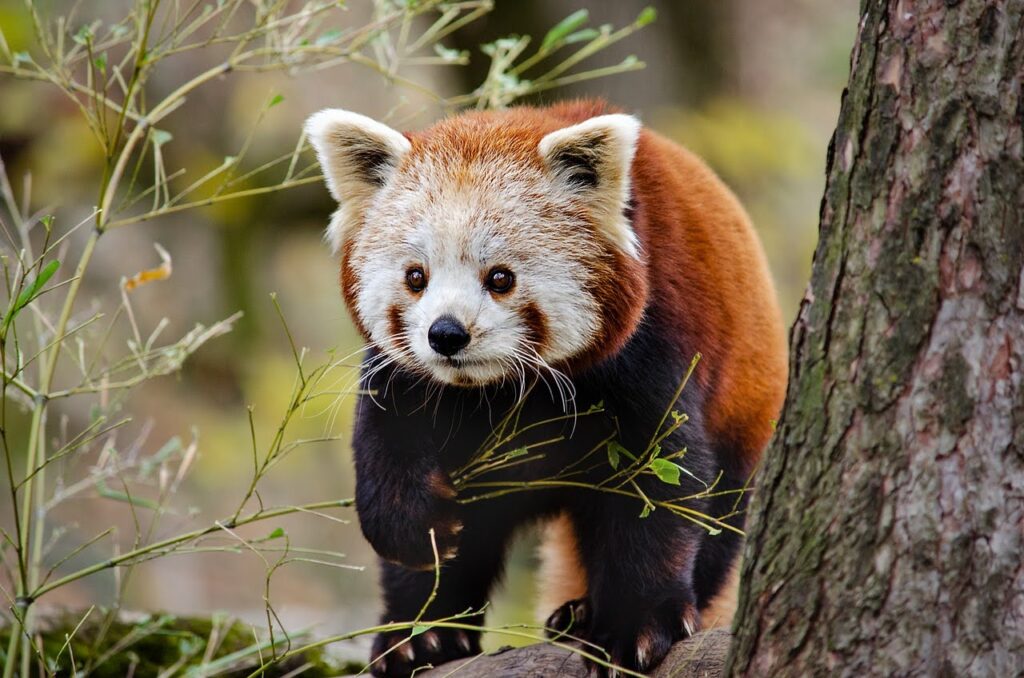
Trekking Through the Himalayas in 2024: An Unforgettable Adventure:
The Himalayas, an awe-inspiring range that spans five countries—India, Nepal, Bhutan, China, and Pakistan—is a trekker’s paradise, offering breathtaking landscapes, rich cultural experiences, and an array of activities for every type of traveler. From its towering peaks to its serene valleys, the Himalayas promise an adventure that blends natural beauty with thrilling experiences. In this comprehensive guide, we’ll explore the best the Himalayas have to offer in 2024, with a focus on trekking, couples’ activities, family-friendly spots, nightlife, cuisine, wildlife, and travel tips. So, lace up your hiking boots, and let’s embark on this epic journey!
A Brief History of the Himalayas:
The Himalayas, the majestic mountain range stretching across South Asia, have a rich and fascinating history that spans millions of years. This incredible natural wonder, whose name is derived from the Sanskrit words “Hima” (snow) and “Alaya” (abode), meaning “Abode of Snow,” is not only the youngest mountain range on Earth but also the tallest. Here’s a deeper dive into the captivating history of the Himalayas:
Geological Formation
The story of the Himalayas began around 50 million years ago during the Eocene epoch, a time when the Earth’s continents were still shifting. This period marked the collision of the Indian Plate and the Eurasian Plate. As the Indian Plate moved northwards at a rapid pace of about 15 cm per year, it eventually collided with the Eurasian Plate. This collision was so forceful that it caused the Earth’s crust to buckle and fold, giving birth to the Himalayan mountain range. This geological process continues today, making the Himalayas seismically active and prone to earthquakes.
Ancient Significance
The Himalayas have played a crucial role in the history and development of South Asia. They acted as a formidable natural barrier, protecting the Indian subcontinent from invasions and influences from Central Asia and beyond. This allowed the cultures and civilizations in South Asia to develop relatively independently. Moreover, the Himalayas have been a source of numerous rivers, including the Indus, Ganges, and Brahmaputra, which have supported agriculture and sustained life in the region for millennia.
Spiritual and Religious Importance
The Himalayas hold immense spiritual and religious significance for several cultures and religions. In Hinduism, the Himalayas are considered the abode of Lord Shiva, one of the principal deities. Mount Kailash, a peak in the Tibet Autonomous Region, is regarded as the earthly manifestation of Mount Meru, the axis of the universe in Hindu, Buddhist, and Jain cosmology. Similarly, the Ganges River, which originates in the Himalayas, is considered sacred and is worshipped as the goddess Ganga.
Buddhism also has deep roots in the Himalayan region. Many Himalayan areas, including Tibet, Nepal, and Bhutan, are predominantly Buddhist. The region is dotted with ancient monasteries, stupas, and sacred sites. Lhasa, the capital of Tibet, is home to the iconic Potala Palace, the traditional residence of the Dalai Lama.
Cultural Diversity
The Himalayan region is incredibly diverse, home to a multitude of ethnic groups, languages, and cultures. In Nepal, the Sherpas, who are renowned for their mountaineering skills, live in the high-altitude Khumbu region near Everest. In Ladakh, India, the Ladakhis maintain a unique Tibetan Buddhist culture. Bhutan, known as the “Land of the Thunder Dragon,” preserves its distinct Buddhist heritage and traditional way of life. In the Indian state of Sikkim, a blend of Nepalese, Lepcha, and Bhutia cultures coexist harmoniously.
Colonial Era and Exploration
The Himalayas captured the imagination of European explorers and mountaineers during the colonial era. In the 19th and early 20th centuries, British surveyors and explorers conducted extensive surveys and expeditions in the region. The Great Trigonometric Survey, initiated by the British East India Company, aimed to map the entire Indian subcontinent, leading to the discovery and naming of many Himalayan peaks, including Mount Everest, named after Sir George Everest, a former Surveyor General of India.
The quest to conquer the highest peaks of the Himalayas began in earnest in the early 20th century. Mountaineers from around the world attempted to scale the summits of Everest, K2, and other formidable peaks. In 1953, Sir Edmund Hillary of New Zealand and Tenzing Norgay, a Sherpa of Nepal, made history by becoming the first climbers confirmed to have reached the summit of Mount Everest.
Modern Significance
Today, the Himalayas continue to captivate adventurers, researchers, and tourists from around the globe. The region’s stunning landscapes, diverse wildlife, and rich cultural heritage make it a popular destination for trekking, mountaineering, and spiritual retreats. The Himalayas also play a crucial role in climate regulation and are often referred to as the “Third Pole” due to their vast ice reserves. However, they face significant challenges from climate change, deforestation, and increasing human activity, which threaten their fragile ecosystems.
Conservation Efforts
Recognizing the importance of the Himalayas, numerous conservation efforts are underway to protect their unique environment and biodiversity. National parks and protected areas, such as Sagarmatha National Park in Nepal, Great Himalayan National Park in India, and Jigme Dorji National Park in Bhutan, aim to preserve the natural habitat of endangered species like the snow leopard, red panda, and Himalayan black bear. Additionally, sustainable tourism practices are being promoted to minimize the impact of visitors on these pristine landscapes.
The Himalayas, with their towering peaks and deep cultural significance, stand as a testament to the power of nature and the resilience of human spirit. Their history is a tapestry woven from geological upheaval, spiritual reverence, cultural diversity, and adventurous exploration. As we look to the future, it is imperative to balance the allure of the Himalayas with the responsibility to protect and preserve this magnificent range for generations to come. Whether you are drawn to their physical challenges, spiritual solace, or simply their unparalleled beauty, the Himalayas promise an experience unlike any other on Earth.
Best Places to Visit in the Himalayas:
The Himalayas, a breathtaking mountain range that stretches across several countries in South Asia, offers some of the most stunning and diverse travel destinations in the world. From towering peaks to serene valleys, ancient monasteries to bustling hill stations, the Himalayas cater to adventurers, spiritual seekers, and nature lovers alike. Here’s a detailed exploration of the best places to visit in the Himalayas:
1. Mount Everest Base Camp, Nepal
Highlights: Trekking, panoramic views, cultural experience.
Mount Everest Base Camp (EBC) is a dream destination for trekkers and adventure enthusiasts. Situated at an altitude of 5,364 meters, it offers a close-up view of the world’s highest peak, Mount Everest. The trek to EBC is challenging but incredibly rewarding, passing through picturesque Sherpa villages, dense forests, and glacial moraines. Along the way, trekkers can visit ancient monasteries, including the famous Tengboche Monastery, and experience the rich culture of the Sherpa people. The journey starts from Lukla, a small town with one of the most thrilling airports in the world.
2. Leh-Ladakh, India
Highlights: High-altitude desert, Buddhist monasteries, adventure sports.
Leh-Ladakh, located in the northernmost region of India, is renowned for its stark landscapes, crystal-clear lakes, and vibrant Buddhist culture. The town of Leh serves as the gateway to this region, offering access to stunning sites like Pangong Lake, Nubra Valley, and the ancient monasteries of Hemis, Thiksey, and Diskit. Adventure seekers can enjoy activities such as trekking, river rafting in the Zanskar River, and mountain biking on some of the highest motorable roads in the world, including Khardung La.
3. Paro Valley, Bhutan
Highlights: Spiritual sites, scenic beauty, cultural heritage.
Paro Valley in Bhutan is a land of stunning natural beauty and rich cultural heritage. The highlight of this region is the Taktsang Monastery, also known as the Tiger’s Nest, which clings precariously to a cliffside 900 meters above the Paro Valley floor. Paro is also home to Bhutan’s only international airport, making it the gateway for travelers. The valley is dotted with traditional Bhutanese homes, terraced fields, and ancient dzongs (fortresses), such as Paro Dzong, which provide a glimpse into Bhutan’s unique culture and history.
4. Manali, India
Highlights: Scenic beauty, adventure activities, colonial charm.
Manali, nestled in the Kullu Valley of Himachal Pradesh, is a popular hill station known for its picturesque landscapes and vibrant culture. Surrounded by towering peaks and lush forests, Manali offers a variety of activities for visitors. The Solang Valley is a hub for adventure sports such as paragliding, zorbing, and skiing in winter. Rohtang Pass, accessible from Manali, provides breathtaking views and snow even in summer. The town also has a number of historical and spiritual sites, including the Hadimba Temple, Manu Temple, and Vashisht Hot Springs.
5. Annapurna Circuit, Nepal
Highlights: Diverse landscapes, cultural immersion, challenging trekking routes.
The Annapurna Circuit is one of the most popular trekking routes in the world, renowned for its diverse landscapes and cultural experiences. The trek takes adventurers through lush subtropical forests, alpine meadows, and arid deserts, offering stunning views of the Annapurna and Dhaulagiri mountain ranges. Along the way, trekkers encounter a variety of ethnic communities, including Gurungs, Thakalis, and Manangis, each with their distinct traditions and lifestyles. The high point of the trek is the crossing of the Thorong La Pass at 5,416 meters, which offers panoramic views of the surrounding peaks.
6. Darjeeling, India
Highlights: Tea plantations, colonial architecture, Himalayan views.
Darjeeling, a charming hill station in the Indian state of West Bengal, is famous for its tea plantations and the Darjeeling Himalayan Railway, a UNESCO World Heritage site. The town offers breathtaking views of Mount Kanchenjunga, the third highest peak in the world. Visitors can explore the lush tea estates, visit the Himalayan Mountaineering Institute, and take a ride on the toy train. The bustling Mall Road, with its colonial-era buildings and vibrant markets, adds to Darjeeling’s unique charm.
7. Shimla, India
Highlights: Colonial heritage, scenic beauty, vibrant markets.
Shimla, the capital of Himachal Pradesh, is known for its colonial architecture, bustling bazaars, and panoramic views of the Himalayas. Once the summer capital of British India, Shimla still retains its colonial charm with landmarks such as the Viceregal Lodge, Christ Church, and the Gaiety Theatre. The Ridge and Mall Road are popular spots for leisurely walks and shopping. Nearby attractions include Kufri, known for its skiing slopes, and Mashobra, a serene retreat with lush green landscapes.
8. Lhasa, Tibet
Highlights: Spiritual center, ancient architecture, Tibetan culture.
Lhasa, the capital of Tibet, is a spiritual and cultural hub that attracts pilgrims and travelers from around the world. The city is home to the iconic Potala Palace, once the winter residence of the Dalai Lama, and the Jokhang Temple, the holiest temple in Tibetan Buddhism. Barkhor Street, a bustling market area, offers a glimpse into Tibetan life with its shops, street vendors, and pilgrims performing koras (ritual circumambulations). The nearby Norbulingka, the summer palace of the Dalai Lama, and the Drepung and Sera monasteries further enrich the cultural experience.
9. Rishikesh, India
Highlights: Yoga and meditation, spiritual retreats, adventure sports.
Rishikesh, situated on the banks of the Ganges River in Uttarakhand, is known as the “Yoga Capital of the World.” The town is dotted with ashrams and yoga centers offering classes, retreats, and spiritual teachings. The iconic Laxman Jhula and Ram Jhula suspension bridges connect the town’s eastern and western banks, providing scenic views of the river and surrounding hills. Adventure enthusiasts can enjoy white-water rafting, bungee jumping, and trekking. The evening Ganga Aarti at Triveni Ghat is a mesmerizing spiritual experience.
10. Pokhara, Nepal
Highlights: Lakeside beauty, adventure activities, gateway to treks.
Pokhara, a picturesque city by the Phewa Lake in central Nepal, is a popular destination for both relaxation and adventure. The city offers stunning views of the Annapurna and Dhaulagiri mountain ranges, reflected in the tranquil waters of Phewa Lake. Pokhara is the starting point for many treks, including the Annapurna Base Camp and the Ghorepani Poon Hill trek. Adventure activities in Pokhara include paragliding, zip-lining, and boating on the lake. The World Peace Pagoda, perched on a hilltop, offers panoramic views of the city and the surrounding mountains.
The Himalayas, with their diverse destinations and experiences, offer something for every traveler. Whether you’re seeking spiritual solace in the monasteries of Bhutan and Tibet, adventure in the rugged terrains of Nepal and Ladakh, or a peaceful retreat in the hill stations of India, the Himalayas promise an unforgettable journey. Each destination within this majestic range is a testament to the beauty, culture, and spirit of the region, making the Himalayas a must-visit for anyone seeking to explore the wonders of the world.
Top 15 Things to Do in the Himalayas:
The Himalayas, a vast and diverse mountain range, offer countless opportunities for adventure, spiritual exploration, and cultural immersion. Whether you are an adrenaline junkie, a nature lover, or someone seeking tranquility, the Himalayas have something to cater to every taste. Here are the top 15 things to do in the Himalayas:
1. Trekking to Everest Base Camp
Highlights: breath-taking views, challenging treks, cultural encounters.
Trekking to Everest Base Camp (EBC) is a bucket-list adventure for many. Starting from the town of Lukla, the trek takes you through diverse landscapes, from lush forests to high-altitude deserts. Along the way, you will pass through Sherpa villages, cross suspension bridges, and visit ancient monasteries. The ultimate reward is reaching EBC, where you can stand at the foot of the world’s highest peak, surrounded by stunning mountain vistas.
2. River Rafting in Rishikesh
Highlights: Thrilling rapids, scenic river, spiritual surroundings.
Rishikesh, known as the “Yoga Capital of the World,” is also a premier destination for white-water rafting. The Ganges River offers rapids ranging from Grade I to Grade IV, providing excitement for both beginners and experienced rafters. The rafting route passes through beautiful landscapes, with opportunities to spot wildlife and enjoy the serenity of the river. After a day of adventure, relax at one of the many ashrams or yoga centers in Rishikesh.
3. Visit the Tiger’s Nest Monastery
Highlights: Spiritual experience, stunning location, cultural heritage.
The Tiger’s Nest Monastery, or Paro Taktsang, is one of Bhutan’s most iconic landmarks. Perched on a cliffside 900 meters above the Paro Valley, this sacred site is believed to be where Guru Padmasambhava meditated in the 8th century. The hike to the monastery is steep but rewarding, offering breathtaking views of the valley and the surrounding mountains. The monastery itself is a marvel of Bhutanese architecture and spirituality.
4. Skiing in Gulmarg
Highlights: Powder snow, stunning scenery, and world-class slopes.
Gulmarg, in the Indian state of Jammu and Kashmir, is a top destination for skiing and snowboarding. The Gulmarg Ski Resort offers some of the best powder snow in the Himalayas, with slopes suitable for all levels. The resort is home to the Gulmarg Gondola, one of the highest cable cars in the world, which takes skiers to an altitude of 3,980 meters. The views from the top are spectacular, with the snow-covered peaks of the Pir Panjal range stretching into the distance.
5. Camping at Pangong Lake
Highlights: Crystal-clear waters, starry nights, tranquil environment.
Pangong Lake, located in the Ladakh region of India, is a stunning high-altitude lake known for its changing colors and crystal-clear waters. Camping by the lake is a unique experience, offering unparalleled tranquility and breathtaking views of the surrounding mountains. At night, the clear skies provide a perfect canvas for stargazing. During the day, visitors can explore the shores of the lake, enjoy birdwatching, or simply relax in the serene environment.
6. Explore Leh Monasteries
Highlights: Rich history, spiritual ambiance, architectural beauty.
Leh, the capital of Ladakh, is home to several ancient monasteries that offer a glimpse into the region’s rich Buddhist heritage. Hemis Monastery, the largest and wealthiest in Ladakh, is known for its annual festival featuring masked dances. Thiksey Monastery, a stunning complex built on a hilltop, resembles the Potala Palace in Lhasa and offers panoramic views of the Indus Valley. Other notable monasteries include Diskit, Alchi, and Spituk, each with its unique charm and spiritual significance.
7. Paragliding in Bir Billing
Highlights: Thrilling flight, panoramic views, experienced operators.
Bir Billing, in Himachal Pradesh, is considered one of the best paragliding destinations in the world. The takeoff site at Billing, at an altitude of 2,400 meters, offers spectacular views of the Dhauladhar range and the Kangra Valley. Paragliders soar above lush green fields, forests, and traditional villages, experiencing the thrill of flight and the beauty of the Himalayas from a bird’s-eye perspective. The annual Paragliding World Cup held here attracts enthusiasts from around the globe.
8. Visit the Tea Gardens in Darjeeling
Highlights: Scenic landscapes, tea tasting, cultural experience.
Darjeeling, a charming hill station in West Bengal, is renowned for its tea plantations. Visiting the tea gardens offers a fascinating insight into the process of tea production, from plucking the leaves to processing and packaging. The lush green plantations, set against the backdrop of the Himalayas, are a sight to behold. Many tea estates, such as Happy Valley and Makaibari, offer guided tours and tea tasting sessions, where visitors can sample the world-famous Darjeeling tea.
9. Yoga Retreat in Rishikesh
Highlights: Spiritual practice, peaceful surroundings, experienced instructors.
Rishikesh is a haven for those seeking spiritual growth and physical well-being through yoga and meditation. The town is home to numerous ashrams and yoga centers offering retreats and courses for all levels. Practicing yoga on the banks of the Ganges River, with the sound of flowing water and the backdrop of the Himalayas, is a deeply transformative experience. Some well-known centers include Parmarth Niketan, Sivananda Ashram, and Yoga Niketan.
10. Take the Toy Train in Shimla
Highlights: Scenic journey, historic railway, colonial charm.
The Kalka-Shimla Railway, affectionately known as the “Toy Train,” is a UNESCO World Heritage site that offers one of the most scenic train journeys in India. The narrow-gauge railway covers a distance of 96 kilometers, passing through 102 tunnels, 864 bridges, and numerous picturesque stations. The journey offers stunning views of the surrounding hills, valleys, and forests, with opportunities to spot local wildlife. The colonial-era architecture of the stations adds to the charm of this historic journey.
11. Mountain Biking in Manali
Highlights: Thrilling trails, diverse terrain, stunning landscapes.
Manali, a popular hill station in Himachal Pradesh, offers some of the best mountain biking trails in the Himalayas. The diverse terrain, ranging from smooth roads to rugged off-road tracks, caters to bikers of all skill levels. Popular routes include the Solang Valley, the Rohtang Pass, and the Manali-Leh Highway. Biking through the picturesque landscapes, with views of snow-capped peaks, dense forests, and sparkling rivers, is an exhilarating experience.
12. Wildlife Safari in Jim Corbett National Park
Highlights: Diverse wildlife, scenic landscapes, guided tours.
Jim Corbett National Park, located in Uttarakhand, is the oldest national park in India and a haven for wildlife enthusiasts. The park is home to a rich variety of flora and fauna, including the Bengal tiger, Asian elephant, Himalayan black bear, and numerous bird species. Guided jeep safaris offer the best chance to spot these animals in their natural habitat. The park’s diverse landscapes, ranging from dense forests to grasslands and rivers, provide a stunning backdrop for wildlife viewing.
13. Attend the Hemis Festival in Ladakh
Highlights: Vibrant celebrations, cultural performances, and spiritual atmosphere.
The Hemis Festival, held annually at Hemis Monastery in Ladakh, is one of the most vibrant and colorful festivals in the Himalayas. The festival commemorates the birth of Guru Padmasambhava, the founder of Tibetan Buddhism. Monks dressed in elaborate costumes and masks perform traditional Cham dances, accompanied by music from drums, cymbals, and horns. The festival provides a unique opportunity to experience the rich cultural heritage and spiritual traditions of Ladakh.
14. Hot Air Balloon Ride in Pokhara
Highlights: Aerial views, serene experience, picturesque landscapes.
Pokhara, a scenic city in Nepal, offers a unique perspective of the Himalayas through hot air balloon rides. Floating gently above the Phewa Lake, with panoramic views of the Annapurna and Dhaulagiri mountain ranges, is a magical experience. The serene and silent flight provides a sense of peace and tranquility, allowing you to fully appreciate the natural beauty of the region. Balloon rides are typically conducted at sunrise or sunset, offering the most spectacular views.
15. Relax in a Himalayan Spa
Highlights: Traditional therapies, peaceful environment, rejuvenating experience.
After days of adventure and exploration, unwinding in a Himalayan spa is the perfect way to relax and rejuvenate. Many resorts and hotels in the Himalayas offer spa services that incorporate traditional healing practices and natural ingredients. Treatments may include Ayurvedic massages, herbal baths, and yoga sessions, all designed to soothe the body and mind. The peaceful mountain surroundings enhance the therapeutic experience, leaving you refreshed and revitalized.
The Himalayas, with their diverse activities and stunning landscapes, offer an unparalleled range of experiences for travelers. Whether you’re seeking adventure, cultural immersion, spiritual growth, or simply a peaceful retreat, the Himalayas provide the perfect setting for an unforgettable journey. From trekking to Everest Base Camp to relaxing in a Himalayan spa, the opportunities for exploration and discovery are endless. So pack your bags, embrace the spirit of adventure, and get ready to create lasting memories in the “Abode of Snow.”
Top 10 Things for Couples to Do in the Himalayas:

The Himalayas, with their awe-inspiring landscapes and serene ambiance, offer the perfect setting for a romantic getaway. Whether you’re looking for adventure, relaxation, or a mix of both, the Himalayas provide numerous opportunities for couples to create unforgettable memories together. Here are the top 10 things for couples to do in the Himalayas:
1. Helicopter Tour Over Everest
Highlights: Aerial views, thrilling experience, unforgettable memories.
A helicopter tour over Mount Everest is an exhilarating experience that offers couples a bird’s-eye view of the world’s highest peak. These tours typically start from Kathmandu, taking you over the stunning landscapes of the Khumbu region. As you soar above the Himalayas, you’ll get breathtaking views of Everest, Lhotse, and other towering peaks. Many tours include a stop at Everest Base Camp or Kala Patthar, where you can step out, take photos, and soak in the surreal surroundings. This unforgettable experience is perfect for celebrating special occasions or simply sharing an extraordinary adventure.
2. Romantic Boat Ride on Dal Lake, Srinagar
Highlights: Serene waters, picturesque surroundings, traditional Shikara boats.
A boat ride on Dal Lake in Srinagar is one of the most romantic activities for couples visiting the Himalayas. The lake is famous for its pristine waters, floating gardens, and traditional Shikara boats. As you glide across the serene lake, you’ll be surrounded by the majestic Himalayan peaks and the charming houseboats that dot the waters. The boat ride offers a peaceful escape from the hustle and bustle, allowing couples to enjoy the tranquility and beauty of the lake together. Don’t forget to capture the stunning sunset views, which add a magical touch to this romantic experience.
3. Stay in a Luxury Mountain Resort
Highlights: Stunning views, world-class amenities, privacy.
The Himalayas boast numerous luxury mountain resorts that offer breathtaking views and top-notch amenities, making them perfect for a romantic retreat. Resorts like Wildflower Hall in Shimla, Ananda in the Himalayas in Rishikesh, and The Oberoi Cecil in Shimla provide a perfect blend of comfort, luxury, and natural beauty. These resorts offer private balconies with panoramic views, spa treatments, fine dining, and personalized services, ensuring an unforgettable stay. Whether you’re celebrating a honeymoon, anniversary, or just looking for a romantic getaway, these resorts provide an idyllic setting for couples.
4. Couples Spa Treatment in Rishikesh
Highlights: Relaxation, rejuvenation, traditional therapies.
Rishikesh, known for its spiritual ambiance and wellness retreats, is an excellent destination for couples looking to unwind and reconnect. Many resorts and wellness centers in Rishikesh offer couple’s spa treatments that combine traditional Ayurvedic therapies with modern wellness practices. These treatments often include massages, herbal baths, and yoga sessions designed to relax and rejuvenate both body and mind. The serene surroundings of the Himalayas enhance the therapeutic experience, making it a perfect way for couples to relax together and enjoy some quality time.
5. Star Gazing at Pangong Lake
Highlights: Clear night skies, tranquil environment, romantic experience.
Pangong Lake, located in the Ladakh region of India, is one of the most beautiful and serene places in the Himalayas. The lake’s high-altitude location and minimal light pollution make it an ideal spot for stargazing. Couples can set up a cozy camp by the lake, snuggle up under a blanket, and watch the night sky come alive with countless stars. The clear skies and the reflection of the stars on the lake’s surface create a magical and romantic atmosphere. It’s a perfect setting for couples to share intimate moments and create lasting memories.
6. Trekking Together in the Annapurnas
Highlights: Stunning landscapes, shared adventure, cultural encounters.
Trekking in the Annapurna region of Nepal offers couples a unique opportunity to experience the beauty and culture of the Himalayas together. The Annapurna Circuit and Annapurna Base Camp treks are among the most popular routes, taking you through diverse landscapes, from lush subtropical forests to high-altitude deserts. Along the way, you’ll pass through traditional villages, encounter diverse ethnic communities, and enjoy breathtaking views of the Annapurna and Dhaulagiri mountain ranges. Trekking together allows couples to bond over shared challenges and triumphs, making it a rewarding and unforgettable experience.
7. Hot Air Balloon Ride in Pokhara
Highlights: Panoramic views, peaceful experience, romantic adventure.
A hot air balloon ride in Pokhara, Nepal, offers couples a unique and romantic way to experience the beauty of the Himalayas. As you gently float above the Phewa Lake and the surrounding landscapes, you’ll be treated to panoramic views of the Annapurna and Dhaulagiri mountain ranges. The serene and silent flight provides a sense of peace and tranquility, allowing couples to fully appreciate the natural beauty of the region. Balloon rides are typically conducted at sunrise or sunset, offering the most spectacular views and creating a magical experience.
8. Romantic Dinner at a Hilltop Restaurant in Shimla
Highlights: Gourmet cuisine, stunning views, intimate setting.
Shimla, the capital of Himachal Pradesh, is known for its colonial charm and beautiful hilltop views. A romantic dinner at a hilltop restaurant in Shimla offers couples the chance to enjoy gourmet cuisine while taking in the breathtaking views of the surrounding mountains and valleys. Many restaurants in Shimla offer outdoor seating, where you can dine under the stars and enjoy the cool mountain breeze. The combination of delicious food, stunning views, and a cozy ambiance makes for a perfect romantic evening.
9. Visit a Tibetan Monastery in Leh
Highlights: Spiritual experience, cultural exploration, peaceful environment.
Leh, the capital of Ladakh, is home to several ancient Tibetan monasteries that offer a unique and peaceful experience for couples. Visiting monasteries such as Hemis, Thiksey, and Diskit provides insight into the rich Buddhist heritage and spiritual traditions of the region. Couples can explore the beautiful architecture, participate in prayer sessions, and enjoy the tranquil surroundings. The serene and spiritual atmosphere of these monasteries offers a perfect setting for couples to connect on a deeper level and find inner peace together.
10. Nightlife in Manali
Highlights: Vibrant atmosphere, live music, local flavors.
While the Himalayas are more famous for their natural beauty and adventure activities, certain places like Manali offer a vibrant nightlife that couples can enjoy. Manali has several bars, cafes, and nightclubs where couples can relax, enjoy live music, and dance the night away. Popular spots include Johnson’s Bar & Restaurant, The Lazy Dog Lounge, and Drifters’ Cafe, which offer a lively ambiance, great food, and a chance to mingle with locals and fellow travelers. Experiencing the nightlife in Manali is a fun way for couples to unwind and enjoy each other’s company in a relaxed setting.
The Himalayas provide a diverse array of experiences for couples, from thrilling adventures and serene retreats to cultural explorations and romantic evenings. Whether you’re seeking excitement, relaxation, or a mix of both, the Himalayas offer the perfect backdrop for creating unforgettable memories with your partner. From helicopter tours over Everest to romantic dinners in Shimla, these top 10 activities are sure to enhance your romantic journey.
Nightlife and Nightclubs in the Himalayas
While the Himalayas are known more for their serene landscapes and adventurous activities, there are a few places where you can experience vibrant nightlife.
Johnson’s Bar & Restaurant, Manali – A lively spot with great music and a cozy atmosphere.
The Buzz, Leh – Popular for its lively ambiance and mix of locals and travelers.
Club Mahindra, Shimla – Offers a variety of entertainment options including live music and dance.
Himalayan Brew, Dharamshala – Known for its craft beers and live music.
Rocky’s Café, Kasol – A chill spot with good food, music, and a laid-back vibe.

Top Restaurants and Cuisine in the Himalayas:
The Himalayan region offers a diverse culinary experience, influenced by its various cultures and traditions.
The Rice Bowl, Leh – Offers authentic Tibetan and Ladakhi dishes.
Sonam’s Kitchen, Darjeeling – Famous for its breakfast and homemade bread.
Moon Peak Espresso, McLeod Ganj – Great coffee and bakery items with a view.
Café Sol, Shimla – Continental cuisine in a chic setting.
Chopsticks Noodle Bar, Manali – Offers a range of Asian dishes.
Everest Steak House, Kathmandu – Known for its steaks and hearty meals.
The Royal Peacock, Thimphu – Serves traditional Bhutanese cuisine.
Moksha Café, Rishikesh – Vegetarian and vegan options with a river view.
Angeethi, Mussoorie – North Indian cuisine with a colonial touch.
Parikrama, Delhi – A revolving restaurant offering panoramic views and delicious food.

Things for Families to Do in the Himalayas:
Toy Train Ride in Darjeeling – A fun and scenic experience for all ages.
Family Trek in Manali – Gentle treks suitable for children.
Wildlife Safari in Corbett National Park – Exciting and educational for kids.
Visit the Hidimba Temple, Manali – A serene and cultural experience.
Boating on Dal Lake, Srinagar – Enjoy a peaceful ride with beautiful views.
Visit the Himalayan Mountaineering Institute, Darjeeling – Learn about mountaineering history.
Cable Car Ride in Gulmarg – Breathtaking views that kids will love.
Explore the Tibetan Museum, McLeod Ganj – A cultural and educational visit.
Picnic at Nainital Lake – Relax by the lake with a family picnic.
Yak Ride in Sikkim – A unique and fun experience for children.
About Wildlife in the Himalayas:
The Himalayas are home to diverse wildlife, including several rare and endangered species. The region boasts a variety of ecosystems, from lush forests to alpine meadows, providing habitats for animals such as the elusive snow leopard, red panda, Himalayan black bear, and various species of deer and birds. Wildlife enthusiasts can visit several national parks and
reserves like the Great Himalayan National Park in India, Sagarmatha National Park in Nepal, and Jigme Dorji National Park in Bhutan to witness this rich biodiversity.
Transportation in the Himalayas
Getting around the Himalayas can be an adventure in itself. Here are the primary modes of transportation:
Flights – Major cities like Kathmandu, Leh, and Paro are accessible by air.
Trains – The Darjeeling Himalayan Railway and Kalka-Shimla Railway offer scenic rides.
Roads – Buses and taxis are common, but the roads can be challenging due to the terrain.
Trekking – Many areas are only accessible on foot, making trekking a primary mode of travel.
Helicopters – Available for remote areas and high-altitude locations.

Transportation in the Himalayas:
Getting around the Himalayas can be an adventure in itself. Here are the primary modes of transportation:
Flights – Major cities like Kathmandu, Leh, and Paro are accessible by air.
Trains – The Darjeeling Himalayan Railway and Kalka-Shimla Railway offer scenic rides.
Roads – Buses and taxis are common, but the roads can be challenging due to the terrain.
Trekking – Many areas are only accessible on foot, making trekking a primary mode of travel.
Helicopters – Available for remote areas and high-altitude locations.
Travel Tips and Awareness for the Himalayas:
Acclimatization – High altitudes can cause altitude sickness; take time to acclimate.
Pack Light – Carry only essentials, and invest in good quality trekking gear.
Stay Hydrated – Drink plenty of water to prevent dehydration.
Respect Local Cultures – Be mindful of customs and traditions.
Travel Insurance – Essential for covering medical emergencies and trip cancellations.
Environmental Awareness – Practice Leave No Trace principles to protect the environment.
Stay Connected – Inform someone about your itinerary and expected return.
Weather Preparedness – Weather can change rapidly; be prepared for all conditions.
Permits and Regulations – Ensure you have the necessary permits for trekking and travel.
Health Precautions – Carry a basic medical kit and any necessary medications.
Humor in the Himalayas:
Trekking in the Himalayas isn’t just about breathtaking views and strenuous climbs; it’s also about the unexpected moments that bring a smile to your face. Picture this: You’ve been hiking for hours, and you come across a sign that reads, “Short Cut – Long Cut,” with arrows pointing in the same direction. Or the time you’re at a remote teahouse, and the menu offers “Yak Cheese Pizza” and “Tibetan Momos” right next to “American Hot Dog.” The charm of the Himalayas lies not just in its majestic landscapes but also in these quirky, delightful surprises that make every trek memorable.
Trekking through the Himalayas in 2024 promises an adventure of a lifetime. From the thrill of conquering high-altitude trails to the serene moments of connecting with nature, every experience here is magnified by the grandeur of the world’s tallest mountain range. Whether you’re seeking adventure, cultural immersion, or just a peaceful retreat, the Himalayas have something for everyone. So pack your bags, bring your sense of humor, and get ready for an unforgettable journey.




